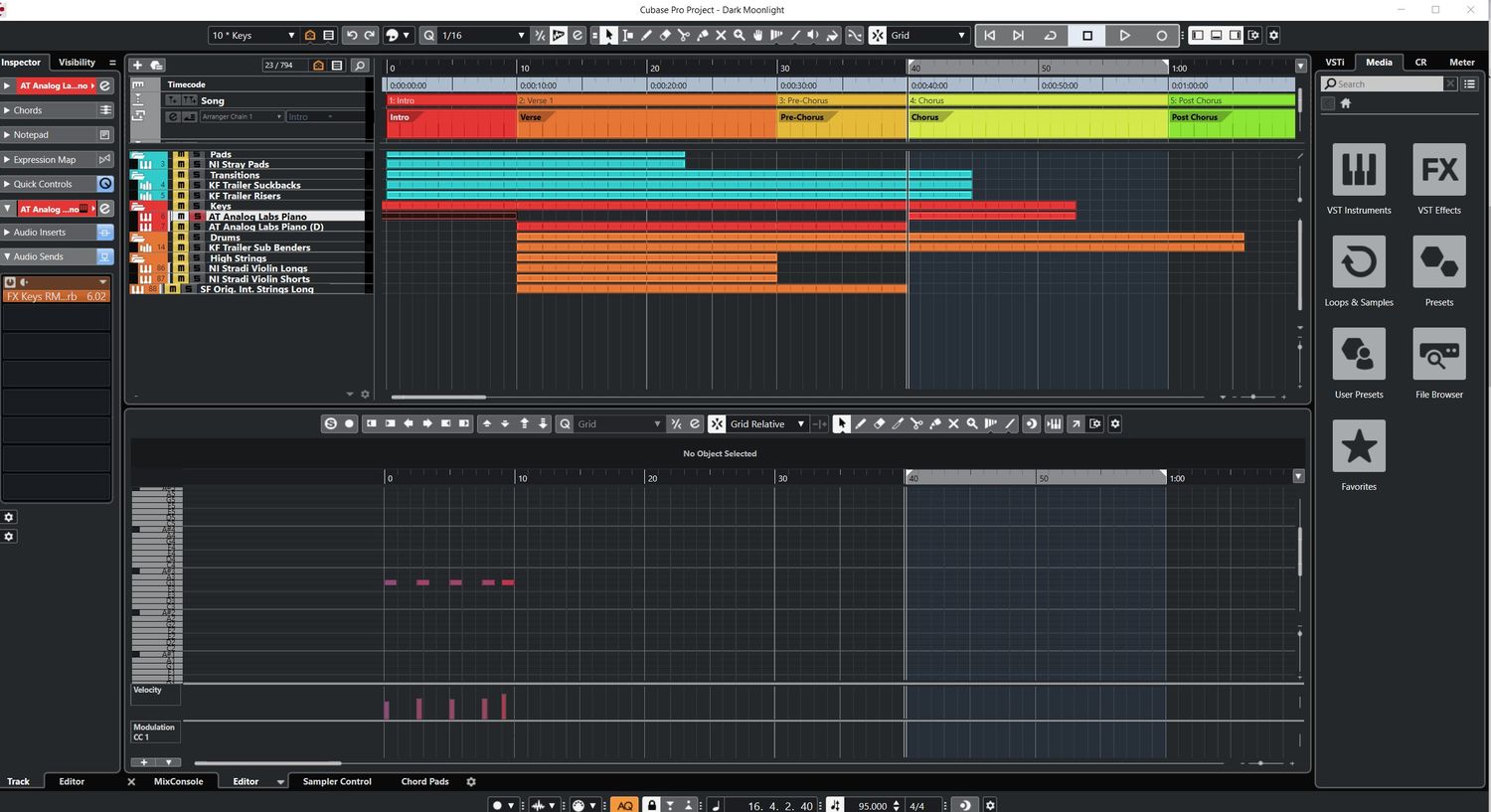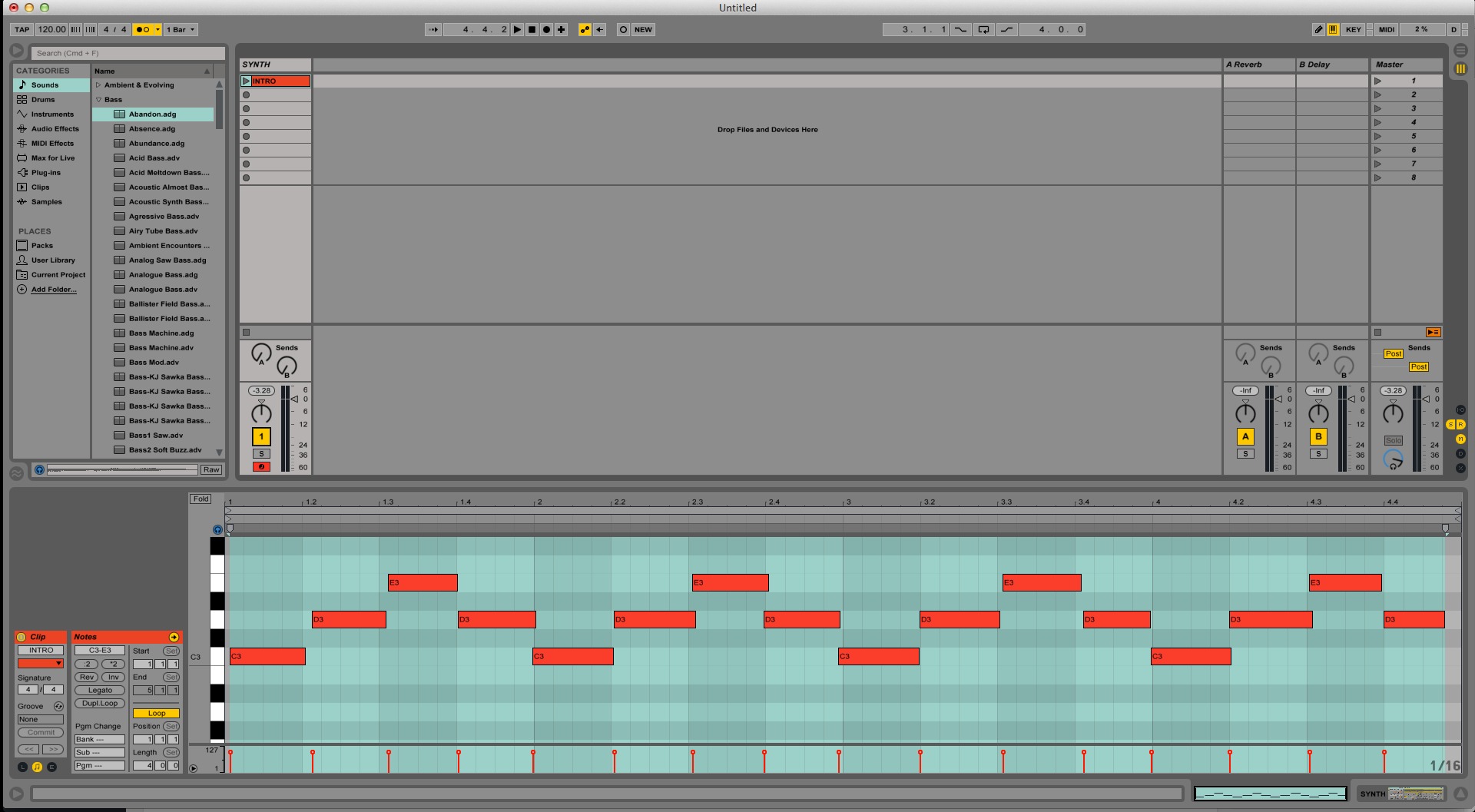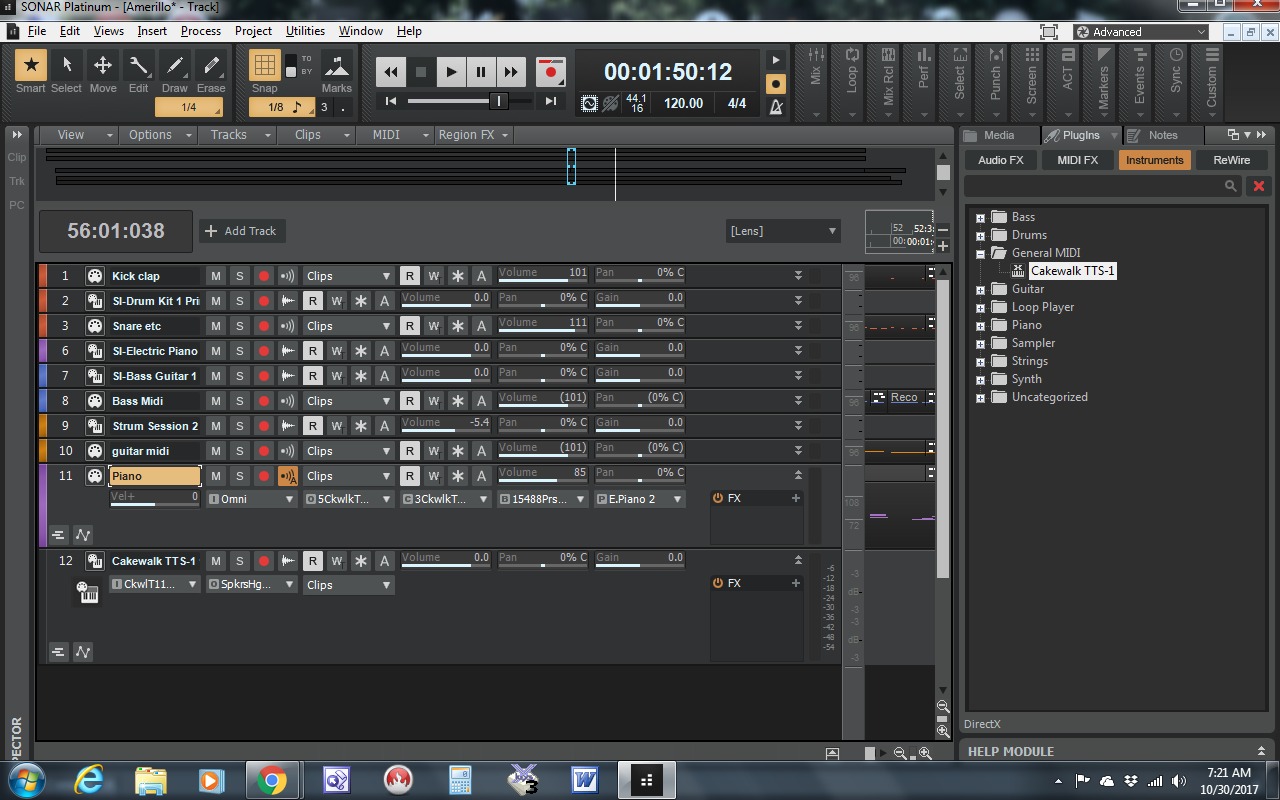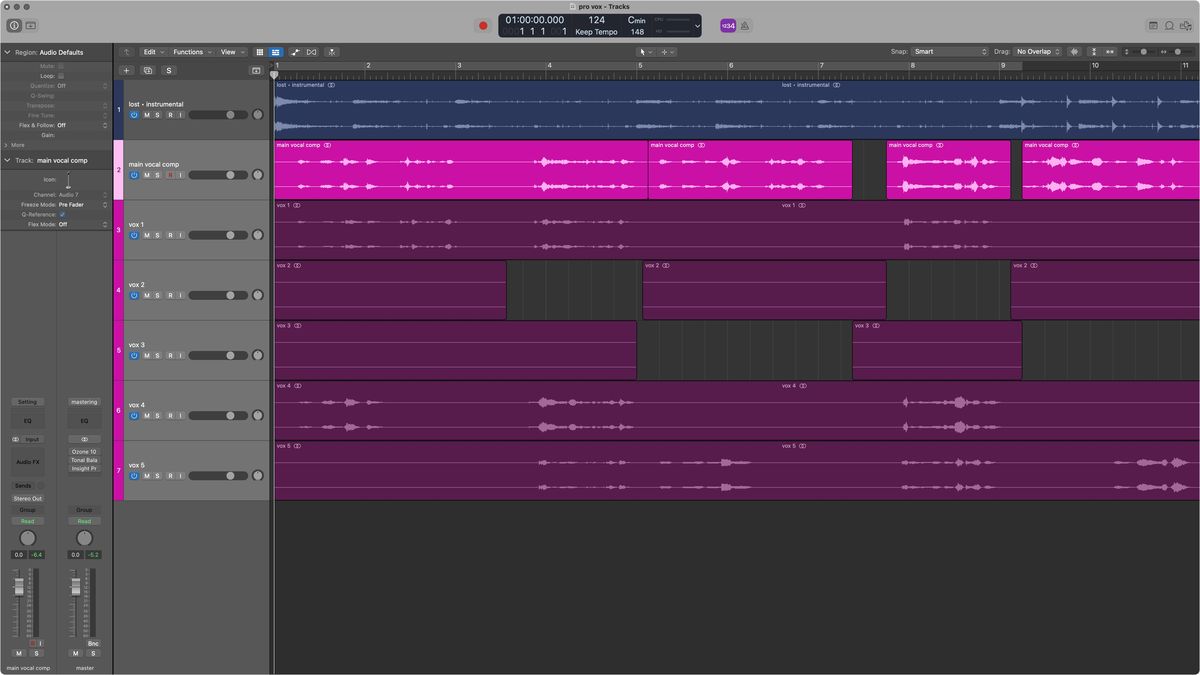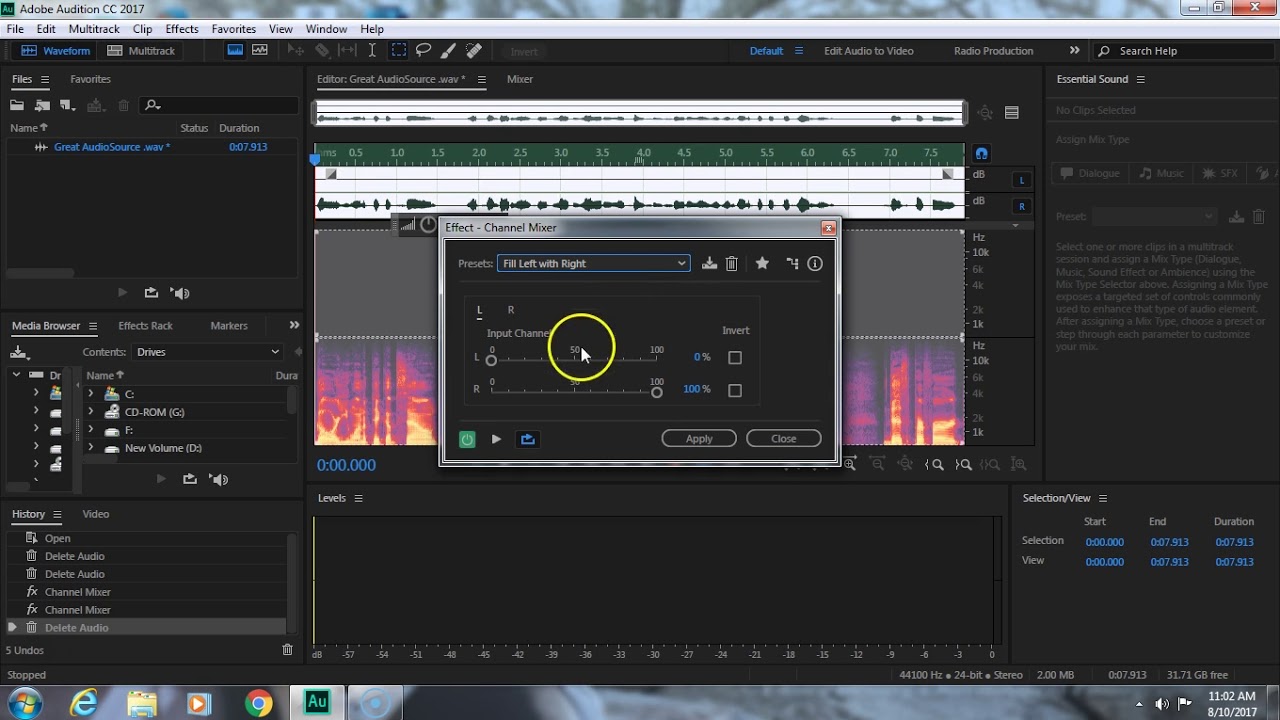Home>Production & Technology>MIDI>How To Shift A MIDI Track An Octave


MIDI
How To Shift A MIDI Track An Octave
Modified: March 9, 2024
Learn how to easily shift a MIDI track an octave in just a few simple steps. Discover the best techniques for transposing MIDI notes and enhancing your music production skills.
(Many of the links in this article redirect to a specific reviewed product. Your purchase of these products through affiliate links helps to generate commission for AudioLover.com, at no extra cost. Learn more)
Table of Contents
Introduction
Welcome to the fascinating world of MIDI and music production! In this article, we will delve into the intriguing realm of shifting MIDI tracks an octave. Whether you are a seasoned music producer, a budding musician, or simply curious about the technical aspects of music creation, understanding how to shift a MIDI track an octave can significantly enhance your music production skills.
MIDI, which stands for Musical Instrument Digital Interface, is a versatile and powerful tool used in music production to control various aspects of sound. It allows musicians and producers to manipulate and control electronic instruments, synthesizers, and digital audio workstations (DAWs) with precision and flexibility.
Shifting a MIDI track an octave involves transposing the notes in the track up or down by 12 semitones, which corresponds to a full octave on the musical scale. This technique can breathe new life into your compositions, allowing you to explore different tonalities, create unique melodies, and add depth to your musical arrangements.
In this article, we will demystify the process of shifting a MIDI track an octave, providing you with valuable insights and practical tips to help you master this essential skill. Whether you are working on a catchy melody, a captivating chord progression, or an intricate musical arrangement, understanding how to shift a MIDI track an octave will open up a world of creative possibilities.
So, buckle up and get ready to embark on a musical journey that will elevate your understanding of MIDI and empower you to take your music production skills to new heights.
Let's dive into the fascinating world of MIDI and explore the art of shifting a MIDI track an octave!
Understanding MIDI and Octaves
MIDI, short for Musical Instrument Digital Interface, serves as the backbone of modern music production, providing a standardized communication protocol for electronic musical instruments, computers, and audio devices. It enables seamless connectivity between different musical components, allowing musicians and producers to control and manipulate various parameters of sound with precision and flexibility.
When it comes to understanding MIDI and octaves, it's essential to grasp the fundamental concepts of musical pitch and transposition. In the context of MIDI, an octave represents a specific range of musical notes that spans from a lower pitch to a higher pitch, encompassing 12 notes in total. These notes are represented by MIDI numbers, with each semitone corresponding to a unique value within the MIDI scale.
In MIDI, the concept of octaves is pivotal, as it forms the basis for transposing musical notes and creating harmonic variations within a composition. Transposition refers to the process of shifting musical notes up or down by a certain interval, and in the case of shifting a MIDI track an octave, this interval amounts to 12 semitones.
Furthermore, understanding the relationship between MIDI and octaves empowers music producers to explore diverse tonalities, experiment with melodic variations, and craft captivating musical arrangements. By leveraging the inherent flexibility of MIDI, musicians can transpose their compositions across different octaves, unlocking a rich tapestry of sonic possibilities and artistic expressions.
In the realm of MIDI, octaves serve as a creative playground, allowing composers and producers to manipulate the pitch and timbre of musical elements with precision. Whether it's infusing a melody with a sense of ethereal grandeur by transposing it up an octave or adding depth to a chord progression by shifting it down, the ability to navigate octaves within the MIDI framework opens doors to endless sonic explorations.
In summary, comprehending the intricacies of MIDI and octaves lays the groundwork for harnessing the full potential of digital music production. It paves the way for musical innovation, enabling artists to sculpt their sonic landscapes with finesse and ingenuity. As we venture deeper into the world of MIDI, the concept of octaves will continue to serve as a cornerstone of creative expression, shaping the contours of musical compositions and pushing the boundaries of sonic artistry.
Shifting a MIDI Track in a DAW
Shifting a MIDI track in a Digital Audio Workstation (DAW) is a fundamental skill that empowers music producers to explore new musical horizons and breathe life into their compositions. Whether you are aiming to transpose a melody, modify a chord progression, or experiment with harmonic variations, the process of shifting a MIDI track in a DAW offers a myriad of creative possibilities.
Most modern DAWs provide intuitive tools and functionalities for transposing MIDI tracks effortlessly. One of the primary methods involves selecting the MIDI track you wish to transpose and utilizing the transposition feature within the DAW. This feature allows you to shift the selected MIDI notes up or down by a specified number of semitones, enabling seamless octave adjustments and harmonic transformations.
Furthermore, many DAWs offer real-time visualization of MIDI notes, providing a clear representation of the musical data within the track. This visual feedback facilitates precise transposition, allowing you to observe the impact of octave shifts on the musical composition in real time. Additionally, some DAWs offer advanced transposition options, such as preserving the original key of the composition while transposing specific MIDI tracks, ensuring musical coherence and integrity throughout the transpositional process.
In addition to traditional transposition methods, some DAWs feature innovative pitch manipulation tools that enable intricate octave adjustments and microtonal transpositions. These tools empower music producers to sculpt the pitch and tonality of MIDI tracks with unparalleled precision, opening up a world of sonic experimentation and artistic exploration.
Moreover, the flexibility of MIDI within a DAW allows for non-destructive transposition, meaning that the original MIDI data remains intact, and the transposed version exists as a separate instance, preserving the integrity of the original composition while facilitating creative exploration.
As technology continues to evolve, DAWs are constantly integrating new features and enhancements to streamline the process of shifting MIDI tracks, providing music producers with a dynamic toolkit for musical expression and innovation. Whether you are working on a symphonic masterpiece, an electronic opus, or a soul-stirring ballad, the ability to shift MIDI tracks in a DAW empowers you to sculpt the sonic landscape of your compositions with unparalleled fluidity and precision.
In essence, the process of shifting a MIDI track in a DAW represents a gateway to boundless creativity, enabling music producers to transcend conventional musical boundaries and embark on a transformative journey of sonic exploration and artistic evolution.
Tips and Tricks for Shifting MIDI Tracks
-
Utilize Key Commands and Shortcuts: Familiarize yourself with the key commands and shortcuts in your DAW for efficient MIDI track transposition. Mastering these shortcuts can significantly streamline your workflow, allowing you to swiftly transpose MIDI tracks and experiment with octave shifts without interrupting your creative momentum.
-
Experiment with Layered Octaves: Explore the concept of layered octaves to add depth and richness to your musical arrangements. By duplicating MIDI tracks and transposing them across different octaves, you can create lush, harmonically complex textures that elevate the sonic impact of your compositions.
-
Fine-Tune Velocity and Expression: When transposing MIDI tracks, pay attention to the velocity and expression of the notes. Adjusting the velocity levels and expression parameters after transposition can enhance the dynamics and emotional resonance of the musical phrases, imbuing your compositions with nuanced articulation and depth.
-
Explore Harmonic Modulations: Delve into the realm of harmonic modulations by experimenting with octave shifts in conjunction with other musical elements, such as modulation effects, arpeggiators, and harmonic enhancers. This approach can yield captivating tonal variations and transformative sonic landscapes, enriching your compositions with evocative musical textures.
-
Utilize MIDI Effects and Processors: Leverage MIDI effects and processors within your DAW to expand the creative possibilities of MIDI track transposition. From pitch modulation to arpeggiation and beyond, these tools offer a diverse array of sonic manipulation options, allowing you to sculpt the tonal character of your MIDI tracks with precision and finesse.
-
Embrace Microtonal Transpositions: Venture into the realm of microtonal transpositions to push the boundaries of traditional tonal structures. By exploring subtle pitch variations within the MIDI framework, you can infuse your compositions with unconventional tonalities and intriguing harmonic nuances, unlocking a world of avant-garde musical expressions.
-
Contextual Transposition: Consider the contextual significance of transposing MIDI tracks within the broader musical arrangement. Whether you are aiming to create tension, evoke nostalgia, or introduce a sense of ethereal transcendence, contextual transposition can be a powerful tool for shaping the emotional narrative of your compositions.
-
Dynamic Automation of Octave Shifts: Embrace dynamic automation to modulate octave shifts over time, infusing your musical passages with fluid tonal transitions and expressive sonic gestures. By automating octave shifts within the MIDI tracks, you can imbue your compositions with a sense of organic evolution and cinematic grandeur.
-
Collaborate and Seek Feedback: Engage in collaborative exploration and seek feedback from fellow musicians and producers. Sharing your transpositional experiments and seeking diverse perspectives can inspire new creative directions and refine your approach to shifting MIDI tracks, fostering a vibrant community of artistic exchange and growth.
-
Preserve Artistic Integrity: Above all, maintain a steadfast commitment to preserving the artistic integrity of your compositions throughout the process of shifting MIDI tracks. Let your creative intuition guide your transpositional choices, and embrace the boundless potential of MIDI track transposition as a means of realizing your artistic vision with authenticity and innovation.
Conclusion
In conclusion, the art of shifting a MIDI track an octave represents a gateway to boundless creativity and sonic exploration within the realm of music production. As we traverse the captivating landscape of MIDI and octaves, we uncover a tapestry of artistic possibilities that transcend conventional musical boundaries and propel us into a realm of infinite sonic potential.
By understanding the fundamental principles of MIDI and octaves, music producers and composers gain the tools to sculpt their musical compositions with finesse and ingenuity. The concept of octaves serves as a dynamic canvas upon which artists can paint evocative melodies, harmonically rich chord progressions, and captivating sonic textures. Through the process of transposing MIDI tracks, musicians embark on a transformative journey of artistic evolution, leveraging the inherent flexibility of MIDI to craft compositions that resonate with depth and emotional resonance.
The shifting of MIDI tracks within a Digital Audio Workstation (DAW) emerges as a pivotal technique, empowering music producers to orchestrate harmonic variations, explore tonal landscapes, and infuse their compositions with a sense of sonic vitality. The seamless integration of transpositional tools and visualization features within modern DAWs facilitates a fluid and intuitive transposition process, allowing artists to navigate octaves with precision and creativity.
Furthermore, the tips and tricks for shifting MIDI tracks offer a wealth of insightful strategies for maximizing the creative potential of transpositional experimentation. From embracing microtonal transpositions to dynamic automation of octave shifts, music producers are encouraged to embark on a journey of sonic innovation, pushing the boundaries of traditional tonal structures and cultivating compositions that reflect their artistic vision with authenticity and innovation.
As we reflect on the significance of shifting MIDI tracks an octave, we recognize its role as a catalyst for artistic expression and musical discovery. It serves as a testament to the boundless ingenuity of music producers and composers, offering a gateway to a world of sonic exploration and creative liberation.
In essence, the ability to shift a MIDI track an octave transcends mere technical proficiency; it embodies the spirit of artistic exploration, inviting musicians to embark on a transformative journey of sonic innovation and creative evolution. As we embrace the dynamic interplay between MIDI and octaves, we embark on a perpetual quest for musical excellence, driven by a relentless pursuit of sonic beauty and expressive depth.
In the ever-evolving landscape of music production, the art of shifting MIDI tracks an octave stands as a testament to the enduring power of creativity and the limitless potential of artistic expression. It invites us to embark on a harmonious symphony of sonic exploration, where the boundaries of musical convention fade away, and the vibrant tapestry of musical expression unfolds with boundless splendor and artistic integrity.

